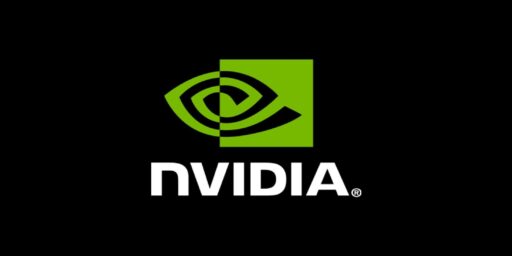Everyone’s asking the same thing: Is AI still a safe bet… or are we stepping into a geopolitical minefield with every silicon wafer?
The short answer? Yes—if you’re NVIDIA. But it’s complicated.
The AI world is sprinting ahead with tools that generate copy, code, and cash. But every chip that powers those tools passes through a political obstacle course. Tensions between the U.S. and China are no longer just background noise—they’re front and center, reshaping global tech flows, IPO calendars, and revenue projections.
And while startups are jockeying for IPOs, crunching valuations, and dodging export bans, NVIDIA’s sitting at the intersection of it all—wielding power and absorbing pressure. With TSMC, Biren, and CoreWeave also playing high-stakes roles, the success of one could easily rock the others.
Let’s break down who’s thriving, who’s surviving, and who’s one compliance audit away from collapse.
Geopolitical Context
This isn’t just a story about chips—it’s about control.
Washington and Beijing are treating GPUs and semiconductors like energy assets. Supply chains are now borderline weapons.
A few months ago, the U.S. doubled down on restrictions that crippled China’s ability to buy chips like NVIDIA’s A100 and H100—products that literally train the world’s most advanced models. It’s part of a broader blockade meant to stall Beijing’s AI ambitions while prioritizing U.S. allies… with constraints. India, for example? Capped at 1,000 advanced AI chips per month under the new AI Diffusion Rule.
Meanwhile, Taiwan’s TSMC has the awkward task of dancing between both giants. They’ve launched a new 4nm chip line in Arizona while still holding a $15 billion China operation that’s now exposed under Biden’s updates to the export ban.
And China isn’t just reacting. They’re doubling down on self-sufficiency. State-supported firms like Biren Technology and Enflame are racing to build competent domestic rivals—bankrolled, localized, IPO-primed, and hungry.
This is more than trade policy. It’s AI nationalism.
Key Policy Decisions And China’s Response
Let’s get into the tactics.
The U.S. has drawn a thick red line on 16nm and smaller node technologies. These chips aren’t just better—they’re strategically powerful, enabling breakthroughs in simulation, language modeling, and surveillance.
Biden’s move to restrict chips below this threshold is surgical. It directly impacts TSMC’s ability to serve its largest mainland clients and blocks NVIDIA’s latest hardware from entering China—even through middlemen.
China’s countermove? Back its own flagships. Biren’s prepping an IPO in Shanghai, free from U.S. investor oversight and built to withstand export crackdowns.
These aren’t just isolated skirmishes. They’re escalation patterns, and they’re redrawing who controls the future of AI horsepower.
Core Industry Players Affected
Let’s talk about the players in the hot seat.
NVIDIA? Still at the top, but rethinking distribution strategies every quarter.
TSMC? Trying to satisfy both Washington’s national security goals and China’s sheer demand volume.
Biren Technology? U.S.-sanctioned, yet moving ahead with a domestic IPO strategy via Guotai Junan. Here’s the twist: they’re not trying to beat NVIDIA—they’re trying to replace it… in China.
CoreWeave? Started as a fringe cloud compute infra play. Now, thanks to NVIDIA investment, they’re on track for a $35B IPO.
These companies are reacting, adapting, and in some cases, plotting around policy. They’re reshaping not only the AI chip landscape, but also the paths money travels.
Market Volatility Drivers
- Skyrocketing demand for AI infrastructure: Startups and multinationals alike need GPU compute, often faster than supply chains can keep up.
- Export controls: Delays, reviews, and legal risk spike every time a chip crosses a border.
- Geopolitical uncertainty: Changes in administration—like a possible Trump return—could radically swing chip policy again.
AI isn’t “open source” anymore. Access is now tiered, rationed, and regulated like medicine during a shortage.
While NVIDIA stock continues to flex under investor optimism, the road ahead involves a lot more regulation… and a lot less margin for error.
US-China Tech Conflict
Joe Biden’s White House has essentially weaponized high-performance compute exports.
It’s not just about sales—it’s about influence. Because who gets the best chips also dominates training timelines, model performance, and by extension, AI supremacy.
TSMC’s Arizona facilities might seem like a diplomatic win, but the reality is they’re walking a tightrope. With China accounting for more than 25% of TSMC’s revenue and the U.S. demanding realignment, something’s gotta give.
NVIDIA? Their $40,000 H100s can’t legally reach Chinese soil. But some make it through anyway—a recent fraud case in Singapore and Malaysia showed how easy it still is to launder chips into embargoed regions.
Meanwhile, Biren is swelling with state funding, support, and urgency. They’re locked out of buying the best chips, so now they’re trying to build them.
The battle isn’t just who can sell chips—it’s who can make them ethically… or undetected.
China’s Semiconductor Self-Reliance Push
Beijing got the memo—and fast.
Instead of trying to dodge every U.S. regulation, China is investing in a replacement roadmap. Firms like Biren and Enflame are domestic champions now—tailor-made for an economy that’s shifting inward.
They’re raising hundreds of millions through local exchanges, public sector banks, and state funds. And they’re doing it with one goal: reduce reliance on NVIDIA, AMD, and TSMC.
Don’t expect parity within a year. But don’t underestimate their intent, either.
AI Industry Supply Chain Disruptions
Let’s break open the guts of the machine—because supply chains have gotten ugly.
NVIDIA’s H100—which supports the most resource-intensive AI models—goes for around $40K per unit. But it also ended up in fake invoices, smuggled batches, and violations tied to third parties in Southeast Asia.
One investigation traced illegally diverted GPUs into gray-market buyers routing them back into China using loopholes.
And the fraud trail didn’t stop at shady exporters. Dell and Super Micro are now under regulatory review for allegedly acting as distribution cover for embargoed shipments.
That’s not market failure. That’s systemic risk. One chip over a line, and entire product lines go dark.
How Intermediary Companies Add Fire to the Risk
| Company | Allegation | Regulatory Status |
|---|---|---|
| Dell | Suspected indirect routing of embargoed GPUs | Under export compliance review |
| Super Micro | Link to Singapore-Malaysia chip diversion case | Regulatory audit in progress |
| Unnamed Brokers | Fake invoices for NVIDIA H100 shipments | Interpol investigation |
These are trillion-dollar players, not back-alley sellers.
If you’re NVIDIA, every partner who flouts the rules puts your entire operation at risk. Especially now, when political patience for AI “leeway” is at an all-time low.
The Global IPO Landscape
Public equity markets aren’t sure what to make of all this. CoreWeave’s massive $3 billion IPO may happen this year, but it’s walking through a financial minefield.
VCs love the AI infrastructure angle—cloud GPUs, vertical scaling, NVIDIA tie-ins—but regulators? They aren’t as bullish.
Cerebras Systems had to slam the brakes on its IPO after CFIUS began scrutinizing a $335M investment from UAE-linked G42, a firm with alleged ties to Huawei.
So here’s what the landscape looks like:
IPO Delays And Valuation Shocks
Let’s not forget Biren either. They’re gunning for a domestic IPO with state backing—but they can’t serve U.S. clients, can’t use American chips, and can’t price in Western growth. That limits global upside even if they clear local listings.
IPO markets right now are less about multiples, more about red flags:
– Cerebras capped their valuation near $4B—less than 2x what AI peers are fetching—purely because of political risk.
– CoreWeave might surge past $35B… or fall flat if export policies shift.
Every AI company is not only judged by performance—it’s judged by borderlines.
CoreWeave’s Role In The AI Ecosystem
So how does CoreWeave fit into all this?
They don’t build chips. They build the cloud layer where those chips live.
That means NVIDIA loves them.
They operate high-density GPU infrastructure made for machine learning tasks. Y Combinator roots gave them speed. NVIDIA funding gave them firepower.
Now they’re filling a void—serving the demand many hyperscalers can’t yet deliver on.
That alone could make them the bellwether IPO of 2024.
Investor Sentiment Going Into The IPO
Here’s why CoreWeave has real pull in a shaky market:
– They’re infrastructure, not speculative SaaS.
– They’re backed by the same hardware that the AI boom relies on.
– They’re U.S. based, CFIUS-neutral, and free of red-flag buyers.
Investors are saying the quiet part out loud—AI hype is meaningless without compute availability. CoreWeave provides that with NVIDIA-grade throughput.
It’s not just a good financial story. It’s a geopolitical insurance policy.
AI Chips Market Under the Microscope
The Demand Surge for AI Chips
Why are governments and companies racing to get their hands on top-tier GPUs? It’s not just hype. The explosion of generative AI—from language models like GPT-4 to real-time video synthesis—has triggered a gold rush for advanced chips. Startups are snapping them up to train ever-larger models, and public-sector agencies are calling them “strategic assets.”
We’re seeing AI chip demand spike globally, bolstered by rising corporate AI ambitions and government programs treating these processors like the new oil. In the US, the Pentagon’s dependency on AI-classified missions grew by over 200% since 2022. Meanwhile, countries like India and Israel are getting hardware-capped under Biden’s AI Diffusion Rule, which restricts chip supply based on national security tiers. That contrast is accelerating AI manufacturing races led by China, the EU, and Southeast Asia.
At the center of this demand vortex sits NVIDIA. Since launching its H100 GPU, its market share in AI inference has surged. The H100’s tensor performance—up to 60x faster than older A100 units—restructured cloud costing models. These chips retail at sky-high prices (~$40,000 per unit), and demand has outstripped supply for five straight quarters. Azure, AWS, and Google Cloud all book months in advance.
For all the buzz around ChatGPT, what quietly powers it—and thousands of copycats—is NVIDIA silicon. The company controls over 80% of high-end AI chip shipments globally, effectively setting the market tempo worldwide.
Competitive Dynamics Among Leading Chipmakers
Now, it’s not just NVIDIA trying to corner the AI chip market. AMD recently rolled out the MI300X—a potential retort to NVIDIA’s H100—but enterprise adoption remains a trickle, not a wave. AMD’s biggest challenge? Backend AI libraries lack native optimization compared to CUDA’s deep lock-in with NVIDIA’s stack.
TSMC, on the other hand, isn’t designing chips but is vital in making them. This Taiwan-based foundry fabricates chips for giants like Apple and NVIDIA. Its expansion into Arizona, with 4nm production now live, is both a hedge against China and a ticket into U.S. supply chains. But it’s losing China revenues fast—down 28% year-on-year—thanks to sweeping export controls from the Biden administration.
China is not staying idle. Biren Technology, blacklisted by US regulators, is going full throttle with a domestic IPO. Despite sanctions, it raised $2.19 billion in state-aligned capital and is targeting a 2025 listing. Biren and fellow Chinese startups like Enflame are building next-gen chips tuned for AI training—part reaction to NVIDIA’s monopoly, part geopolitical rebellion.
The real tension isn’t just East vs. West. Even among US allies like Israel, access to NVIDIA’s best chips is being restricted under new tech rules. Firms are racing to secure alternatives, and local startups are tempted to build their own silicon—even if it means rebuffing NVIDIA’s ecosystem dominance.
One thing’s clear: innovation isn’t slowing. Everyone’s playing catch-up with the frontrunner, rewriting their strategies in real time.
Economic Indicators and Market Volatility in Tech
Market Indicators Driving Uncertainty
Macroeconomic indicators are giving AI chip investors whiplash. Inflation remains sticky, market confidence is brittle, and semiconductor exports—once a cash cow—are now minefields of bureaucracy and risk. Global chip flows between China and the US have dropped significantly since 2021, exacerbated by aggressive export bans and supply chain reshuffling.
Take the NVIDIA H100 export saga. A Singapore-Malaysia fraud case revealed illegal routing of GPUs meant for China, implicating big names like Dell and Super Micro. US regulators are circling, and firms operating close to that gray-zone risk long-term backlash. These aren’t footnotes—this is the new terrain AI operates in.
While instability is rising, so is the M&A surge. In 2024, 54% of all AI equity deals outside China came via acquisition, signaling that consolidation is the preferred hedge. Larger firms are swallowing up startups for their chips, people, and pipelines. Simultaneously, startups in the US captured 67% of global AI venture capital—outpacing Chinese firms by a factor of three. So, despite the chaos, capital is still flowing—but with more selective urgency.
Analysis of NVIDIA Stocks Amid Volatility
NVIDIA stock soared in early 2024 but hit turbulence by mid-year. The culprit? A cocktail of investor caution, supply constraints, and Washington’s escalating chip controls. When the White House added advanced GPU classification to its entity lists, traders read it as a long-term earnings threat—not a minor hurdle.
Beyond geopolitics, financial reports still inspire confidence. NVIDIA’s latest earnings showed $26B in quarterly revenue, bolstered by AI demand across cloud and enterprise computing. However, analysts flagged the inventory squeeze and export limits as major risks for FY25 projections.
Charts tell their story, but the mood under them matters just as much. Right now, investors toggle between optimism over AI’s future and panic over regulatory overreach. Watching NVIDIA’s response—scaling US production, investing in partner firms like CoreWeave—helps sketch what tomorrow’s chip war will look like.
Investor Sentiment and Strategic Responses
How Regulatory Challenges Impact Investment Decisions
The AI Diffusion Rule turned up the heat. By tiering countries into chip-access categories, the US government made it harder for allies like India and Israel to scale large AI models. Their monthly limit? Only 1,000 units of high-end GPUs—a fraction of what is needed for competitive AI labs.
Cerebras Systems was among the first victims of this new regulatory climate. Its IPO plans collided with the Committee on Foreign Investment in the United States (CFIUS), which flagged concerns over its UAE backer G42’s Huawei ties. With 83% of its revenue from a single client in question, Cerebras adopted a non-voting share model to rescue valuation—but the IPO remains in gridlock.
Behavioral and Financial Trends Among Investors
Investors are recalibrating. Risk-averse money is shifting away from bleeding-edge AI R&D and toward infrastructure plays like CoreWeave, which handles the “picks and shovels” of the AI boom. Backed by NVIDIA, CoreWeave’s upcoming IPO could hit a $35 billion valuation, assuming it avoids geopolitics and keeps engineering at top speed.
VCs are also diversifying geographically—in part to dodge export scrutiny. There’s a surge in fund flows to Southeast Asia and Europe, zones still navigable under US rules. Interestingly, many funds now require geopolitical risk assessments before placing bets—something virtually unheard of three years ago.
And there’s a moral undertow. Some firms, burned by controversies in content moderation outsourcing or surveillance infrastructure, are vetting targets through ESG audits—going beyond green labels, and into labor transparency. Why? Because the next regulatory shoe could land anywhere—as fast as the AI chips powering it.
GPU Leadership and Market Forecast
NVIDIA owns this space. Period. When people say “AI chip,” they mean NVIDIA GPU. That’s not just market dominance—it’s mental real estate. Right now, if you’re training a model with serious teeth, you’re likely running it on H100s or A100s. And let’s get real, those chips are more valuable than gold. Literally—some go for $40,000 a pop.
That dominance isn’t safe, though. Geopolitics is cracking the foundation under NVIDIA’s feet. Biden’s export controls have swooped in hard—making it illegal to ship advanced GPUs to China. That’s a big hit, because Chinese demand was a huge revenue faucet. It’s forcing NVIDIA to split its roadmap: high-performers for the Allies, neutered versions for everyone else. And despite this, demand hasn’t cooled.
They’re also watching their six. AMD and homegrown Chinese players like Biren are lurking. Everyone’s out to grab a slice. NVIDIA fights back with more than chips—they’re building an ecosystem: software stacks, AI cloud services, even full-stack data center partnerships.
Forecasting ahead, here’s the deal:
- Demand for GPUs will explode further with AI model complexity rising
- New chip standards will hit limits on cooling and power first, not logic
- AI infrastructure-as-a-service becomes its own monster segment
Bottom line? If NVIDIA keeps layering software and vertical integration, they won’t just sell the shovel. They’ll own the goldmine.
Financial Highlights from NVIDIA Earnings Reports
Earnings? A rocket launch. NVIDIA just posted back-to-back record quarters, mostly thanks to skyrocketing AI demand. Their Data Center division, which includes AI chips, pulled in billions—outperforming even the company’s gaming segment. That’s the new signal. AI is the main dish, not the side hustle.
Their most recent report showed revenue jumping over 100% year-over-year. That’s not just growth—that’s hypergrowth. Wall Street’s not just watching, they’re betting. Institutional investors piled in hard after NVIDIA’s Q2 report in 2024. Profit margins? Still healthy. R&D investments? Climbing.
Now let’s talk strategy. This isn’t “sell more GPUs and pray.” They’re making serious moves:
- Expanding partnerships with CoreWeave for AI cloud dominance
- Investing in software development stacks like NVIDIA CUDA to lock developers in
- Diversifying into verticals: automotive AI, healthcare inference engines, content generation APIs
Instead of spreading out, they’re going deep. In every layer of AI, from the chip to the app store, they’re marking territory. That’s how you moat when the battlefield keeps shifting.
CoreWeave and Industry Domino Effect
If CoreWeave lands its $35 billion IPO target, expect a chain reaction. Period. Every AI unicorn sitting on a pre-IPO deck will suddenly push launch. Investors crave a winner, and CoreWeave—backed by NVIDIA’s own hardware and trust—is the torchbearer.
What makes it different? They’re not building consumer apps. They’re betting on infrastructure-as-a-service––renting out high-performance NVIDIA GPUs to anything that screams “large language model.” Their revenue model? Solid margins, minimal waste. Their growth? Pegged to AI adoption curves.
If they hit their valuation, ripple effects hit the market like a boulder in a pond:
- Smaller startups tethered to GPU clouds will gain valuation boosts by loose proximity
- VCs will see “NVIDIA-backed” as the gold stamp
- Regulators will start asking: is NVIDIA becoming the AWS of AI chips?
Smaller IPO hopefuls—especially in Europe and Southeast Asia—should take notes. Position like CoreWeave: align yourself with a hardware titan, prove out infrastructure stability, and ditch buzzword inflation. No one’s buying “next-gen AI” without power.
Broader Trading Outlook and AI Market Projections
Here’s the thing Wall Street doesn’t like to talk about: geopolitics is now part of the AI valuation model. Biden’s AI Diffusion Rule limited chip flows by country tier, capping allies like India to 1,000 high-grade GPUs per month and slamming the door completely on China. Result? Unequal AI power isn’t just talking point material—it’s trade reality.
Venture capitalists are getting cautious in all the wrong ways. They bet heavy when “AI” meant new chatbots. Today, “AI” means physically building your own cloud infrastructure. That’s capital intensive. It takes grit, not pitch decks.
Looking ahead into 2025, the AI chip sector won’t just rise—it’ll split. On one hand, you’ve got the NVIDIA clique—firms with early access to top-tier silicon and friendly export paths. On the other? Rogue players and state-sponsored Chinese firms like Biren and Enflame, building domestic capacity under heavy firewalls.
Post-IPO, the divide grows. Expect these trends:
- IPO-ready firms focused on infrastructure will see higher valuations than app-level ones
- Sanctioned AI firms in China will pursue domestic IPOs and subversive export routes
- M&A activity surges as US firms consolidate to defend their NVIDIA-guaranteed moats
This is no longer about tech. It’s about sovereignty. Chips are the new oil. Get used to it.
Regulatory Strategies for Ensuring Market Growth
Let’s stop pretending the market can self-regulate here. When you’ve got $40K chips, black-market networks, and international sanctions, you need rules with bite. But not rules that kill growth.
Here’s what could work:
- Export quotas with transparency tools: Let market players track chip flows openly
- CFIUS reform: Don’t just block foreign investments—educate startups on compliance early
- IPO security screenings tied to ethical sourcing: Make sure that AI unicorns sourcing chips are not routing them through suspect intermediaries
The goal? Don’t over-regulate innovation out of existence—oversee the flows. Track the GPUs like you track rare earth minerals. Tag ‘em and trace ‘em.
Governments also need to invest. Not with subsidies alone—co-build neutral cloud zones in emerging markets to prevent chip monopoly cartels. Market health isn’t just about letting private capital play, it’s making sure they don’t burn the ecosystem while chasing exits.
Final Thoughts: The Intersection of AI Innovation and Geopolitical Challenges
Zooming out, here’s what’s raw and real: the AI market is at war with itself. On one side sits innovation—the insatiable hunger for better models, cheaper inference, quicker answers. On the other? Geopolitics—national security fears, chip throttling, and IPO scrutiny.
NVIDIA’s stock may look like a rocketship, but take a closer look at the fuel. Export limitations. Unregulated intermediaries. Congressional hearings. We’re living a moment where public companies are reshaping global policy—because the compute they make shapes power.
Every investor you know is watching NVIDIA not because it’s a chip company, but because it’s a geopolitical barometer. If it bends or breaks, the market listens. If CoreWeave flies or fails, it recalibrates startup narratives across every continent.
So what should you do?
- Track earnings calls not just for numbers, but for regulation updates. The lines between markets and militaries are blurring.
- Watch chip pathways—including who’s getting sanctioned, and who’s laundering tech.
- Push companies you back for transparency, supply chain clarity, and ethical rollout—not PR-palatable nonsense.
Because whether it’s NVIDIA pushing boundaries or Biren dodging sanctions, AI isn’t just infrastructure—it’s the new international arms race with APIs. And the real scoreboard? It’s who controls compute. Not who writes code.







